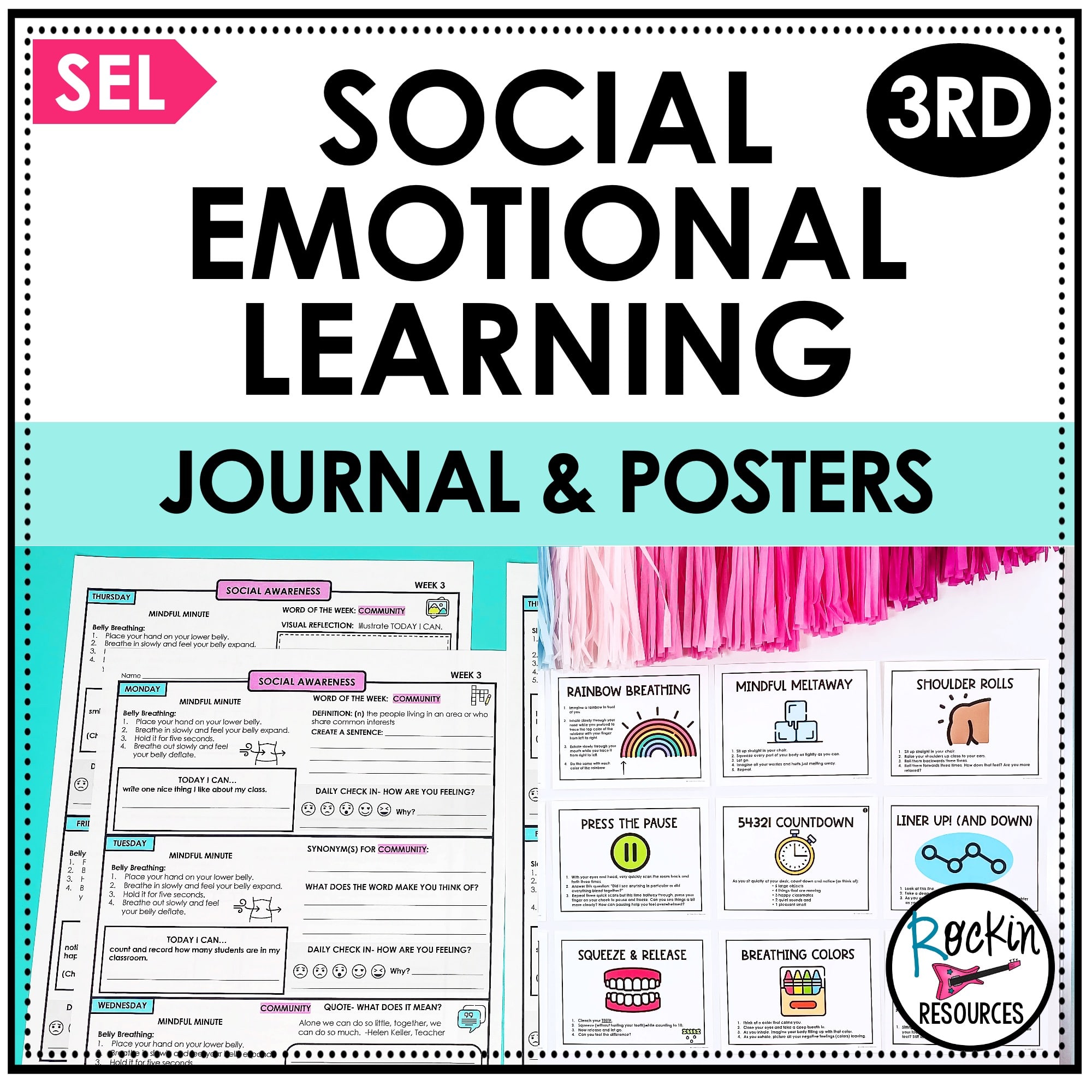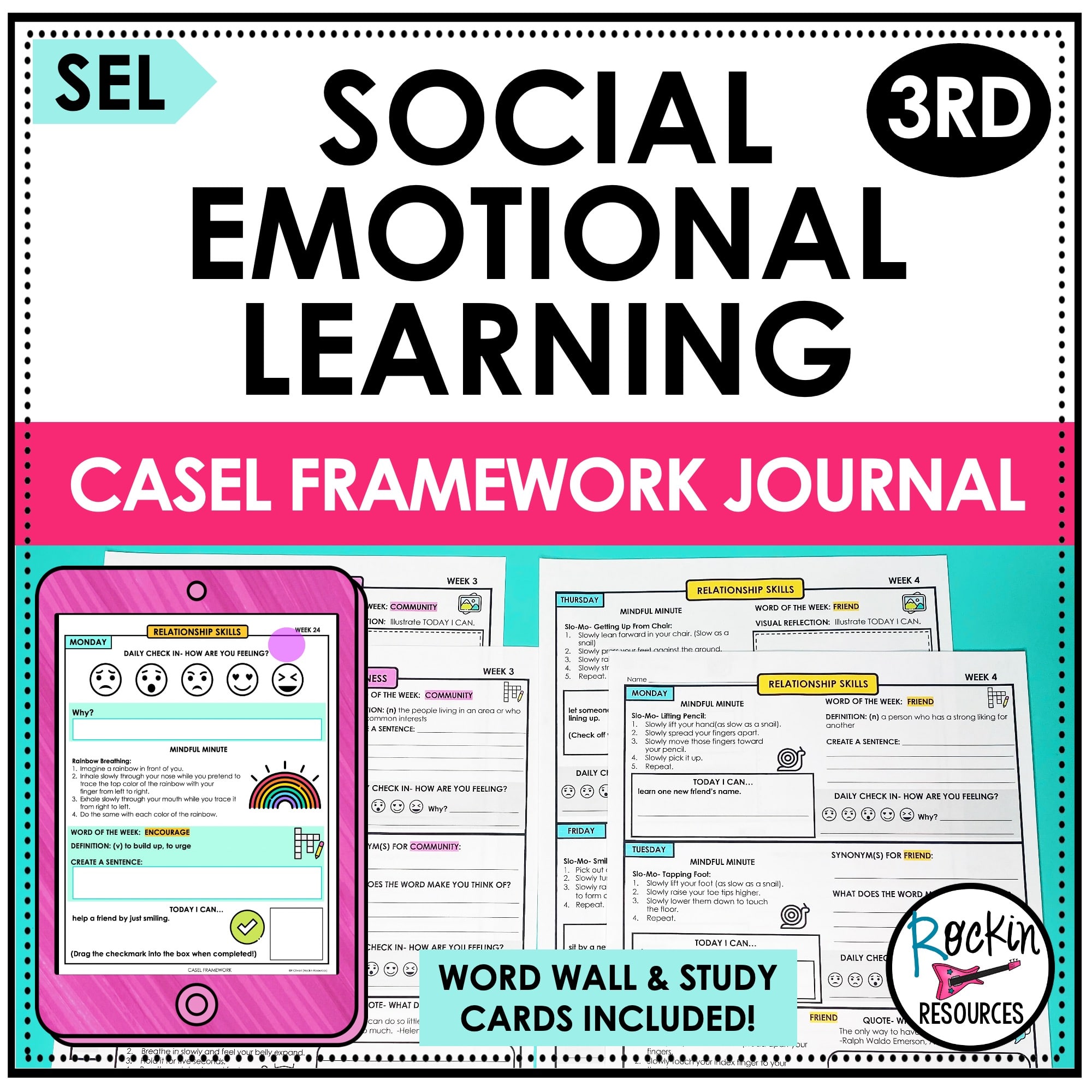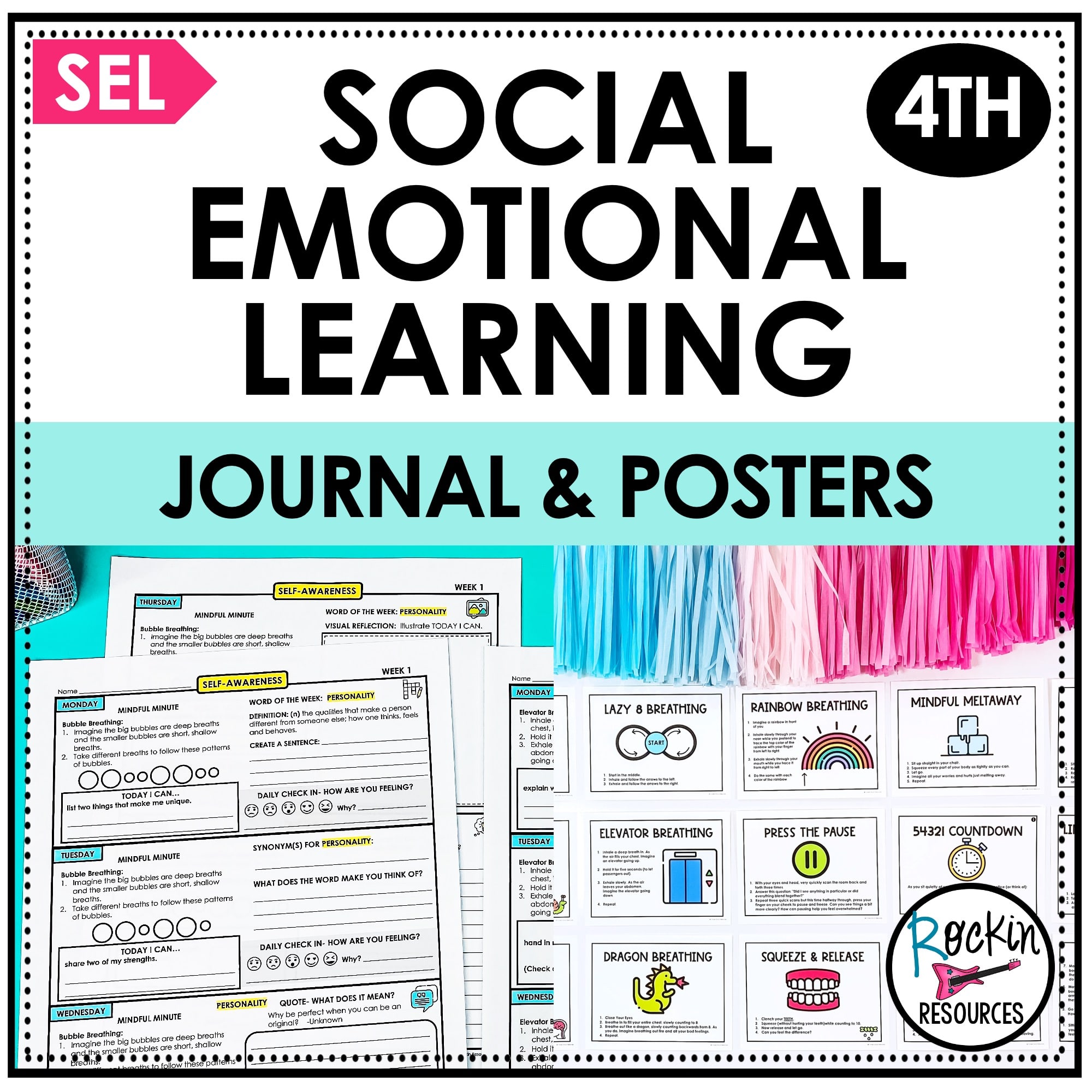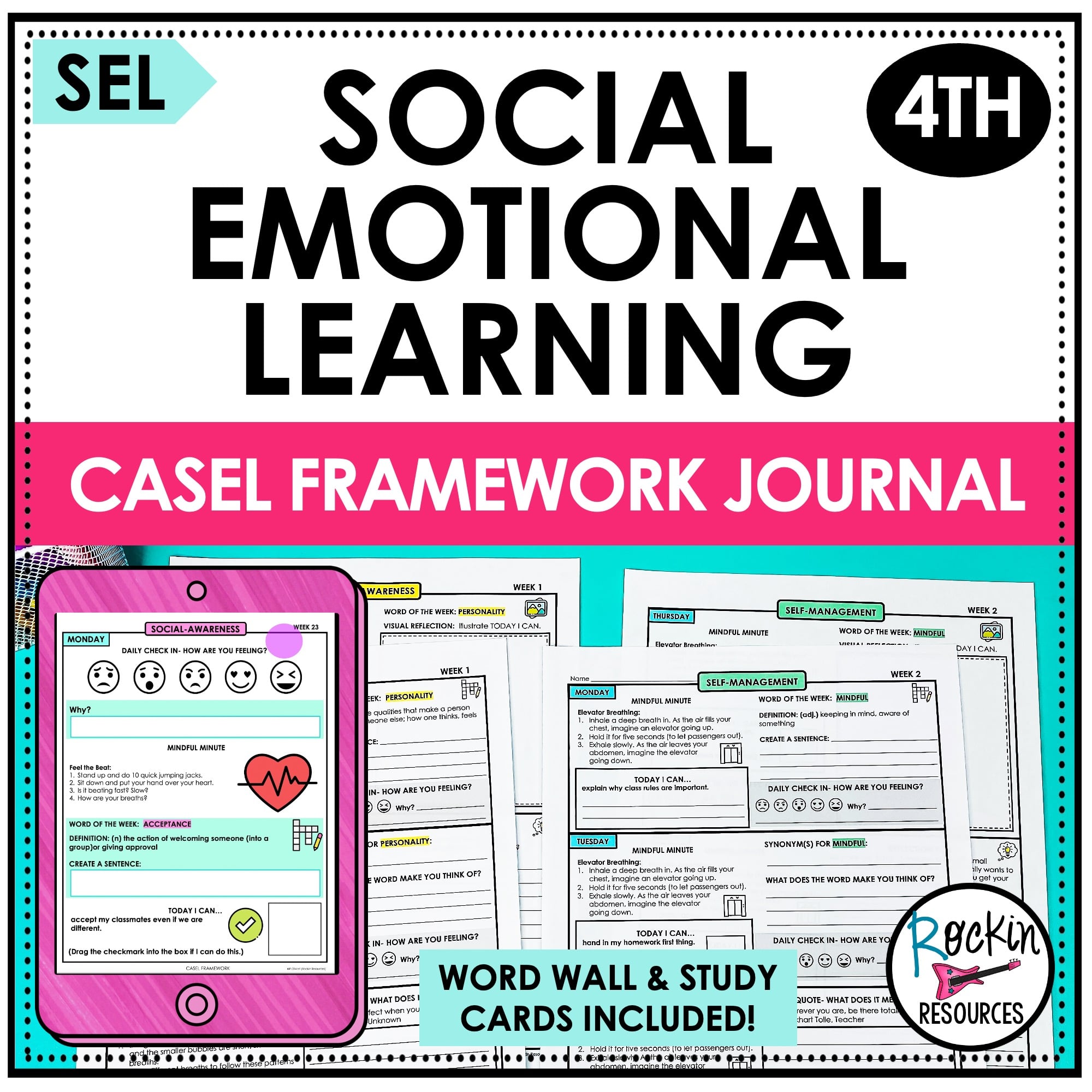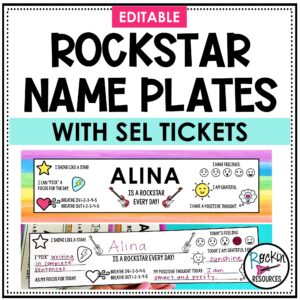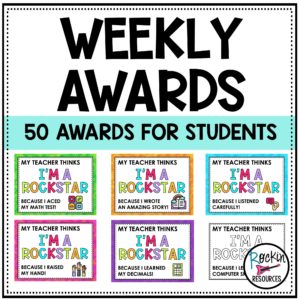Have you ever felt like there’s a tornado of thoughts, emotions, and ideas whipping around in your head and you can’t seem to figure out which way is up, down, left, or right? The brain can experience, think, and feel many different things at once, and this can either be a blessing or a curse! Rather than letting the mind run rampant 24/7, you and your students can learn to understand and master the mind with a few of our Rockin’ tips, tricks, and tools for positive thinking. Read on to learn HOW TO INCORPORATE POSITIVE THINKING IN THE CLASSROOM.

DAILY JOURNALS
To make sense of the brain’s chaotic thinking patterns, many people use daily journals to check in with themselves. For those unfamiliar to journaling, this activity involves some form of written, typed, or illustrated expression of one’s thoughts, emotions, ideas, etc. Because the writer is metaphorically moving their thoughts from within the mind and out onto a piece of paper, it becomes a lot easier for the individual to literally see what is going on inside their head from a different “outside” point of view. Any opportunity for self-reflection is invaluable because it can aid individuals in visualizing harmful thought patterns, irrational fears, or emotional triggers that may be negatively impacting their lives. Journaling has also been shown to help people in setting & achieving goals, improving writing skills, inspiring creativity, relieving stress, and building memory strength!
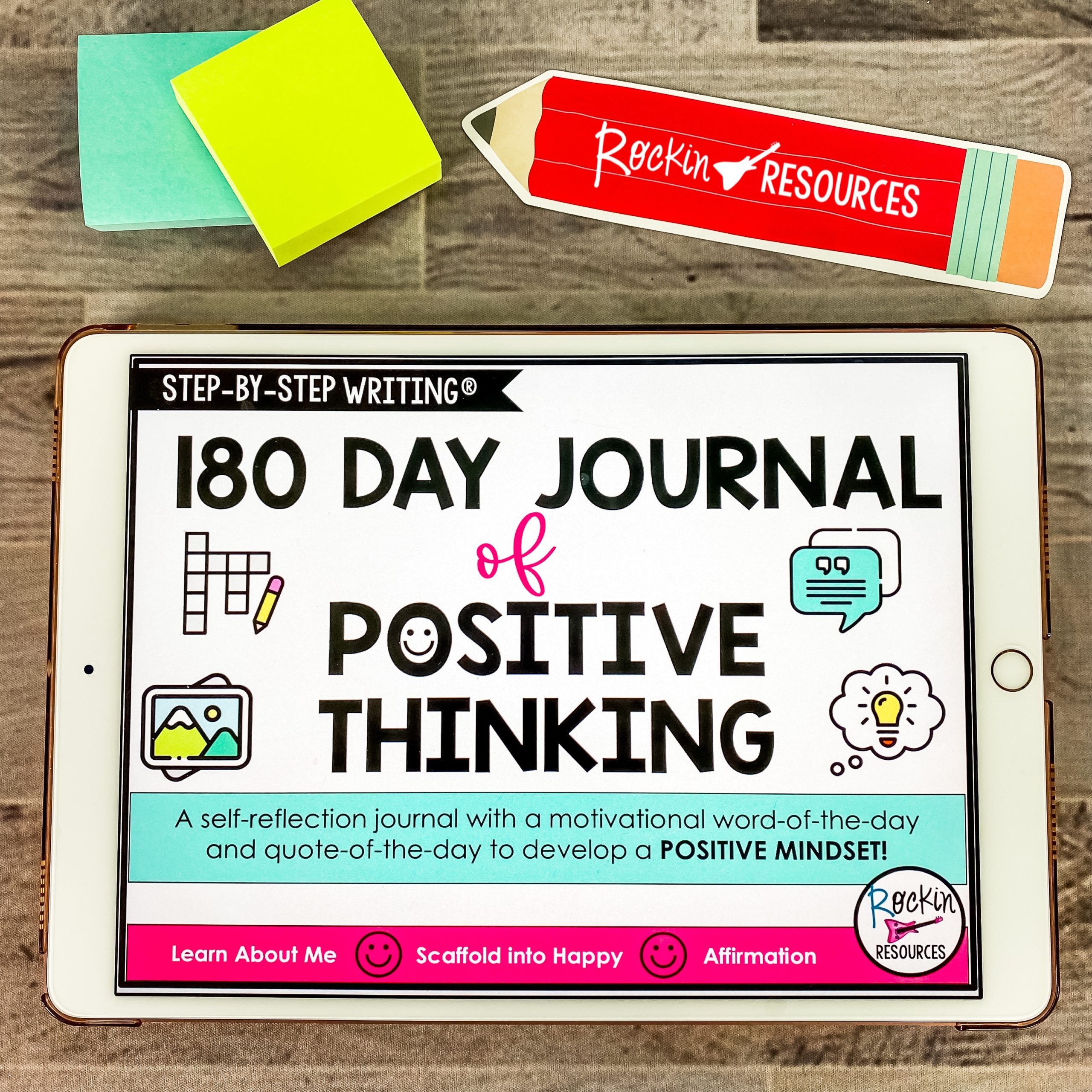
180 DAYS OF POSITIVE THINKING
It may be difficult to explain the complexities of the human mind to young children, but teaching them how to journal doesn’t have to be! Rockin’ Resources has created a 180 Day Journal of Positive Thinking with 18 scaffolding sections to help your students journal and develop a healthier mindset. Each section builds upon the last and they each section includes 10 days of self-reflection journaling. Within each daily journal entry is a word of the day, an inspirational quote of the day, a space for a written reflection (prompt included), and an area for an illustrated reflection. The range of journal activities supports students mentally and academically in multiple ways, ensuring that no matter what their preferred learning style is, they’ll be able to relate to their personal journal. This resource is accessible as a PDF, PowerPoint, or Google Slides document, and students can either write on a printed copy or type on the digital document. The self-reflection journal is a wonderful addition to your classrooms or young ones you may know that could benefit from some mental strength and increased positivity.

POSITIVE THINKING MENTOR TEXT
In order to delve deeper into the journey of self-improvement and increased positivity within your home or classroom, check out our full list of positive thinking mentor texts! These books can assist in revealing the power of positive thinking and affirmations, as well as aid in class discussions about identifying complex emotions, harmful thinking patterns, and other ways that we can change our brains for the better. There are also a few selections of texts aimed towards adults, because no matter what age, we could all use an extra dose of positivity in our lives!
Since we’re all constantly working with high-speed super computers and managing the overwhelming amounts of digital and real-world data, our minds can become messes within the blink of an eye! With our 180 DAY JOURNAL OF POSITIVE THINKING and LIST OF MENTOR TEXTS, you can help yourself and your students make sense of the mental chaos through self-reflection, journaling, and learning about the power of positive thinking.
Discover Related Resources:
Share this Post on Pinterest:










